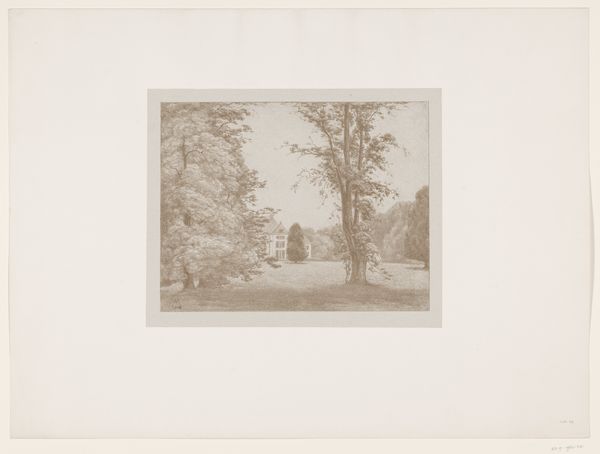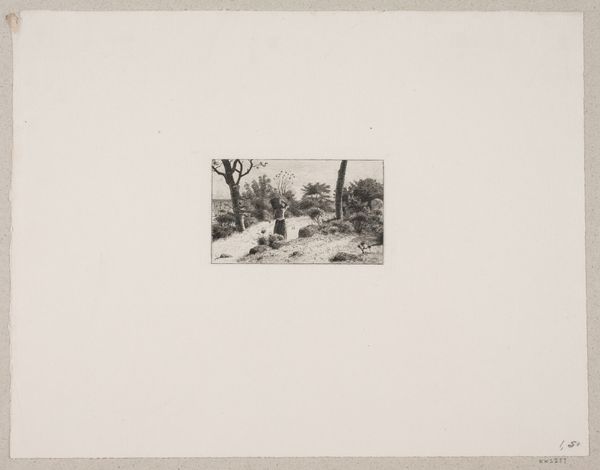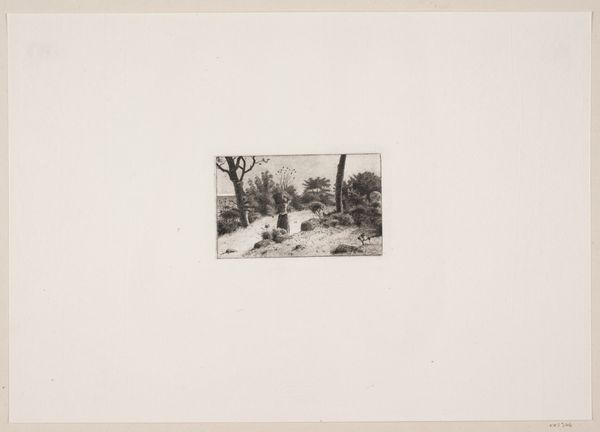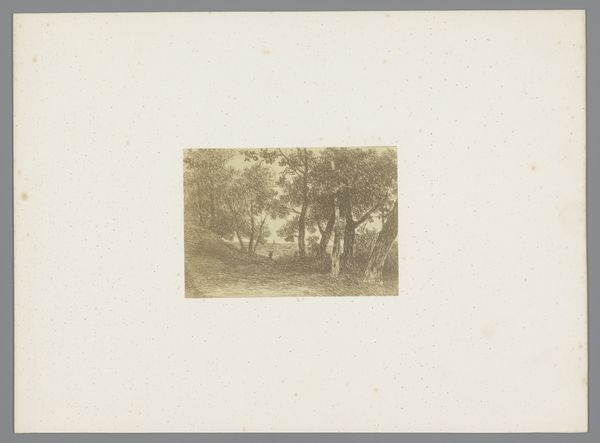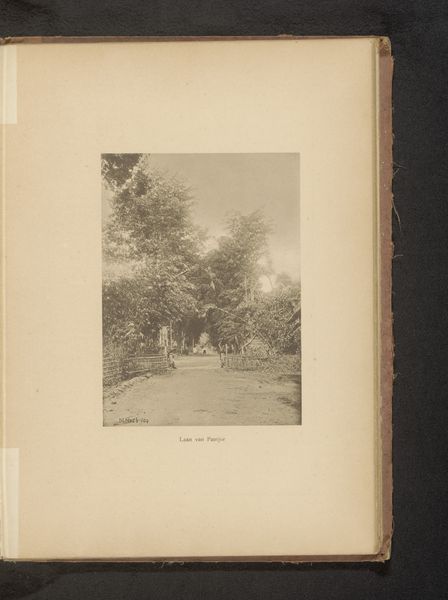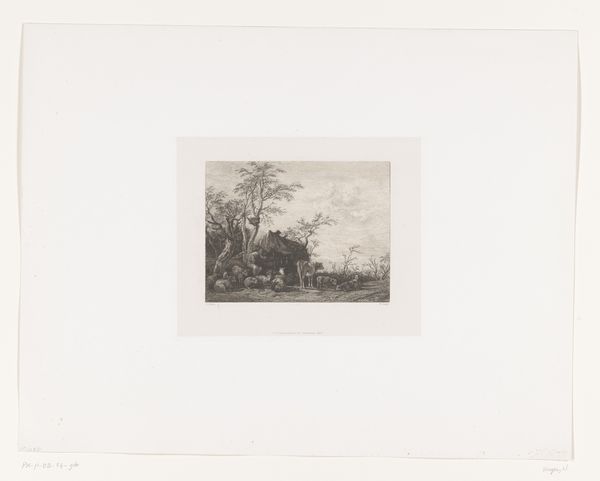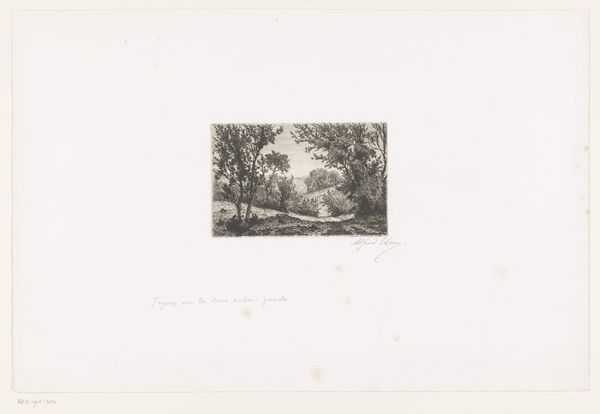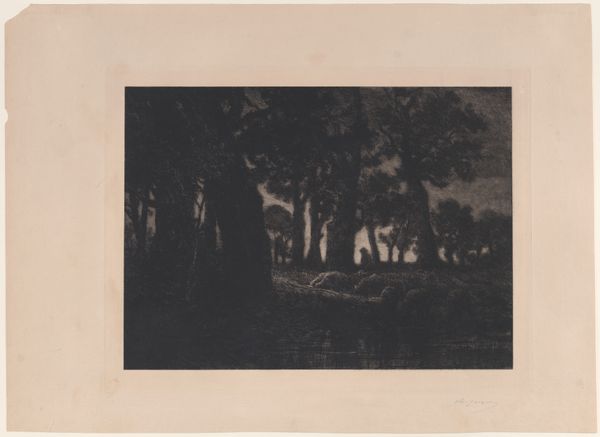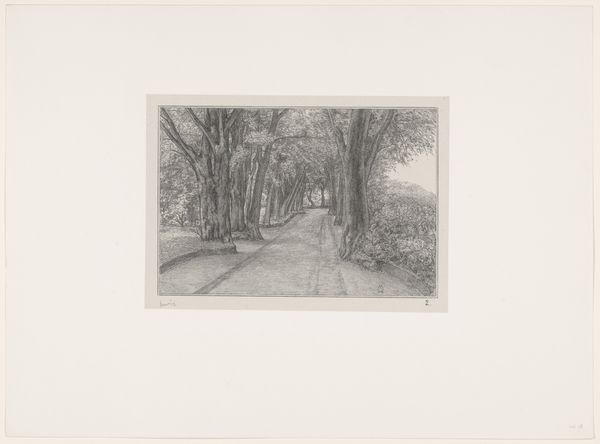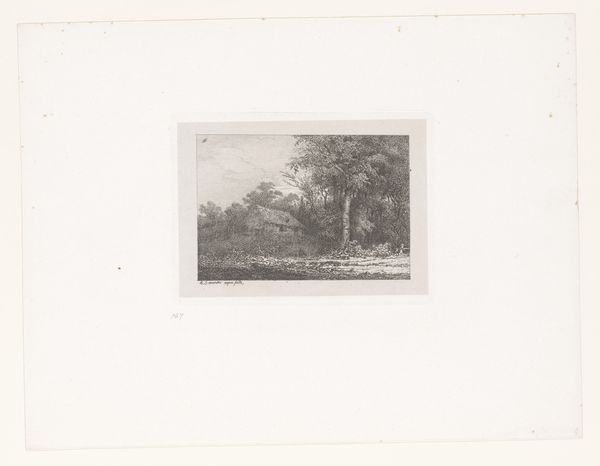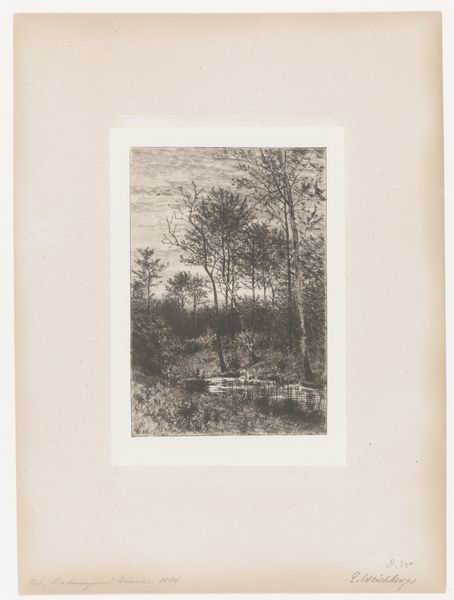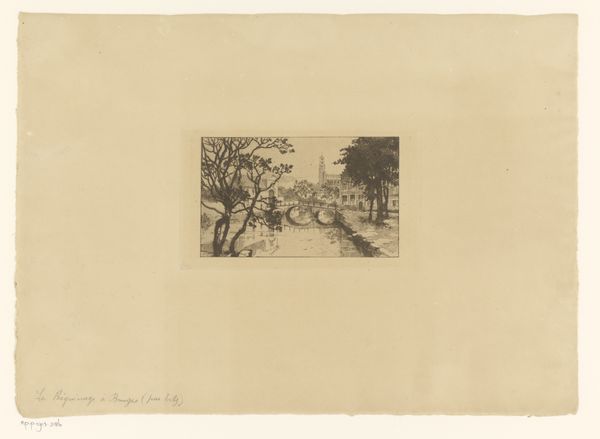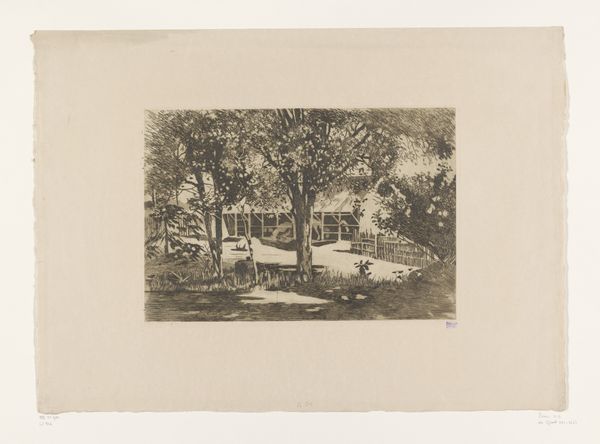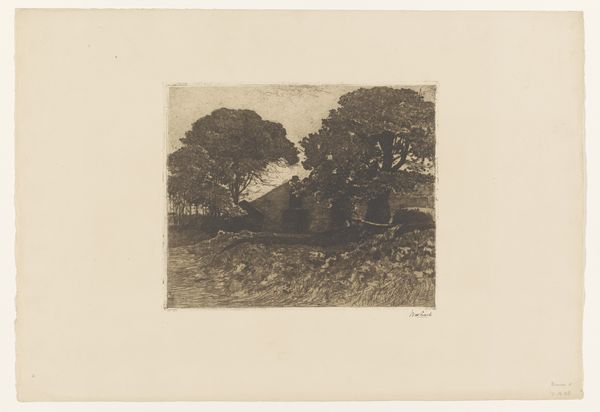
Dimensions: height 457 mm, width 621 mm
Copyright: Rijks Museum: Open Domain
Editor: So, this is "Landhuis in een tuin" or "Country house in a garden," a drawing from 1905 by Simon Moulijn. It has a calm, tranquil feeling to it. I’m really drawn to the way the artist uses line to create such a sense of depth. What strikes you when you look at it? Curator: It's interesting you pick up on the tranquility. I find that deceptive. Consider the social context of the early 20th century. As industrialization rapidly progressed, anxieties about urban overcrowding and pollution grew among the elite. Images of serene country estates like this one offered a form of escapism, a visual antidote to the perceived ills of modernity, for those who could afford that lifestyle, of course. What do you make of the viewpoint? Editor: It's almost like we're peeking through the trees at the house. Makes it seem very private and secluded. Curator: Exactly! The careful control of who has access to that imagery reinforces social boundaries. Also, consider the stylistic choice. Moulijn aligns himself with Impressionism, a style associated with capturing fleeting moments and sensory experiences. By adopting it, what’s he doing to the representation of the landed gentry here? Is he monumentalizing their power? Editor: Maybe... or softening it? The style feels almost nostalgic, even though it's contemporary to the time. Like an idealized view. It is an interesting tension. Curator: Precisely. The print acts as a careful construction of a particular image of wealth and leisure. That balance between observation and constructed image makes this piece quite thought-provoking. Editor: I see it in a completely new light now! Thanks for pointing out how context and social anxieties shape the seemingly simple scene.
Comments
No comments
Be the first to comment and join the conversation on the ultimate creative platform.
